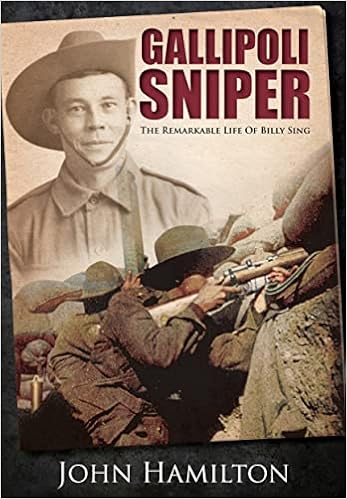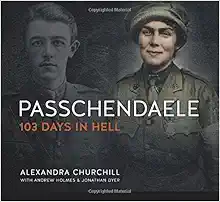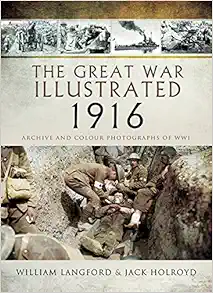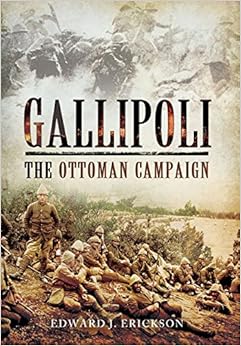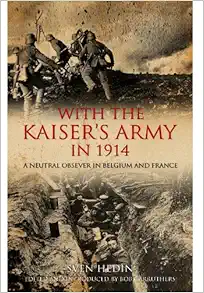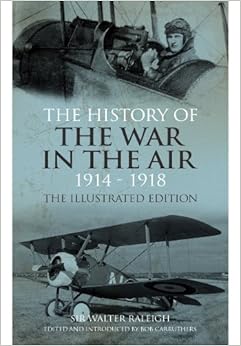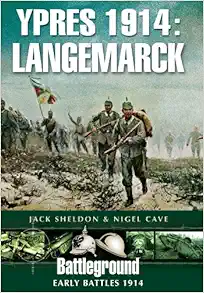The Evolution of British Infantry tactics in World War One
By Roger Daene
World War One on the Western Front is often times depicted as a series of senseless battles where infantry ran across open fields only to be slaughtered by machinegun and artillery fire. The popular conception is that there were little innovations in tactics. Wilhelm Balck, a German division commander, had written many articles and manuals on tactics before the Great War.[1] He said, “Bullets quickly write new tactics.” After the Battle of the Marne in 1914 and the subsequent German retreat, the war on the western front became more of a positional war rather than a war of maneuver. The goal of the Allies and the Germans was to penetrate the enemy’s main defense lines and exploit any breakthrough. The goal would be hard to attain because of the unique nature of warfare in World War One. Never before in the history of the world were so many new weapons introduced or old ones that suddenly became practical enough to use on a wide scale. World War One would see the introduction of the airplane, tank, and poison gas which had never been used on any battlefield. Although artillery had been around for centuries, recent innovations allowed for larger pieces to be developed that fired a heavier shell even greater distances than ever before. The machinegun had been used on other battlefields but now the machineguns were more mobile and would be used in greater numbers. Handgrenades became a practical weapon and would see widespread use for the first time. Rifle grenades and trench mortars allowed artillery support on a squad level which had not been available in previous wars. Added to this, the size of the armies which would serve on the Western Front had never been dealt with before. Commanders had to deal with communication problems unheard of in previous wars and the communication problem was only exasperated by the new weapons. The slaughter would be great on the Western Front as all armies tried to incorporate the new weapons into their tactics and to coordinate their use.
The various armies were nearly exhausted as a result of trying to break the stalemate by 1917. The French army’s losses at Verdun in 1916 and the mutiny of 1917 had rendered the French army offensively impotent. The Battle of the Somme in 1916 and the Battle of Passchendaele in November 1917 bled the British army white. The German Army had tremendous casualties blunting the Allied offensives, but with peace on the Russian Front at the Treaty of Brest Litovsk, the German Army on the Western Front was reinforced with nearly fifty-five divisions. They believed that with their renewed strength, the German armies on the Western Front had enough forces for one last major offensive operation and a chance to force a favorable peace before the weight of the American army could be brought to bear.
The German Spring Offensive of 1918 has spawned several myths. The myth is that the stormtroop tactics used by the Germans were new and innovative and nearly won them the war because the British 5th Army did not know how to react to these new tactics. A later legend bloomed and continues to today that the Blitzkrieg had its beginnings in 1918 in the German Spring Offensive. These myths have been perpetuated by noted historians such as British historian A.J.P. Taylor in his book, The First World War, published in 1963.[2] Recently, American historian John Eisenhower continued the myth of new German tactics in his book, Yanks: The Epic Story of the American Army in World War I published in 2001.[3]
This paper will focus on the evolution of British infantry and artillery tactics, and the introduction of tanks and aircraft providing ground support that gave them the advantage over their German opponents. The question to be answered is how these advantages proved to be decisive. Second, various journals and memoirs of soldiers and officers will be investigated to see if they understood the broad sweeping changes taking place with the new tactics.
It is first necessary to define the meaning of the word “tactics”. The word can be used in two senses. The first is grand tactics. Grand tactics involves the large-scale movement of large bodies of troops across the battlefield. Grand tactics include the use of close air support and the creeping barrages. Critical to grand tactics was communication. The problem of communication continued to plague all the armies throughout the war and was never fully resolved. Proper communication allowed commanders to stay in contact with frontline units and to direct artillery support to reduce or suppress enemy strong points. The success of a creeping barrage depended on communication between the artillery commanders and the advancing infantry. Events on the battlefield disrupted that critical communication and sometimes the results were catastrophic to the advancing infantry. The development of better wireless communication became prevalent in the Second World War, which allowed for he hasty deployment of troops at the critical moments in the battle. The second type of tactics is termed Minor tactics. Minor tactics involve movements of troops at the platoon level and deployment at both the squad or section level. The evolution of minor tactics included the positioning of the Lewis machineguns on either the left or right flank of the platoon.[4]
Once the fighting commenced on the Western Front in 1914, the evolution of tactics began almost immediately. Early in the war, artillery, machineguns, and rifle fire decimated infantry units as they maneuvered forward in column and deployed in line for firing. If the infantry survived the rush across no-man’s land, the bayonet was seen the way to clear an enemy position. As the war progressed; however, the bayonet became obsolete as the weapon for clearing an enemy position.
The hand grenade replaced the bayonet as the weapon of choice for clearing an enemy trench or to destroy a strongpoint. Charles Edmund Carrington wrote in his journal about his experiences in the Great War and commented about the extensive use of hand grenades. As he and his men attempted to clear the zigzag shaped trench of the Germans, both sides predominantly began tossing hand grenades with an occasional rifle or pistol shot when someone rose above the trench’s parapet to throw a grenade. Amazingly, he records four different types of grenades used in just this one encounter.[5]
The presence of several types of grenades in one small unit action demonstrates that both sides were trying to develop a useable and reliable hand grenade. As the war progressed, soldiers received special training in the proper use of hand grenades. Captain Churchill Dunn, of the 23rd Foot (which was also known as the Royal Welch Fusiliers) records in his journal that the Germans first used hand grenades in October 1915 and the British introduced theirs in large numbers shortly thereafter. Dunn records that certain men were chosen to be sent to special ranges to learn to throw the grenade and these men were considered specialists.[6] Unlike today’s soldiers, all of whom receive grenade training, only a few were chosen for this role during the Great War, although any soldier could use a hand grenade if needed, but with various degrees of success.
By 1915 the British General Staff realized that the rifle accuracy of the soldiers had deteriorated and the Lewis gun was introduced to supplement the firepower of the platoon. Whether or not the Lewis gun is an automatic rifle or light machinegun is still debated but the frontline soldiers used it effectively in the role of a light machinegun.[7] The extensive use of the Lewis gun gave the British troops a decided advantage over their German counterparts. The German frontline soldier recognized this value and used any captured Lewis guns. The guns were bored to accept German ammunition. However, the German Army did not receive a light machinegun of German manufacture until the spring 1918.
The relatively quick change and implementation of the new minor tactics nearly brought the British a major victory in the Battle of Loos in September 1915. The British infantry of General Douglas Haig’s I Corps suffered heavy losses but succeeded in breaking the German lines. However, the failure to exploit this breakthrough was at the grand tactical level. The reserve of two infantry divisions in reserve were too far to the rear to be brought up in time to exploit this success.[8] Some blame for the failure to exploit this breakthrough falls on Haig, the commander of I Corps. He committed all his divisions to the attack and kept nothing as a reserve. Haig expected draw upon the army’s reserve if he were successful.[9]
Although historians sometimes consider Loos to be a failure in the sense that the big breakthrough was not achieved, the British High Command learned some valuable lessons. For the first time a creeping barrage was successful and the troops could take maximum advantage of the suppression fire provided by a creeping barrage. Machinegun barrages were also used effectively to suppress a section of the trench or strongpoint.[10] The British learned several costly lessons as well. The first lesson was that their artillery shells could not cut the wire and the wire cutters provided to the troops were too light to cut the thick strands of wire. Providing heavy wire cutters was a simple undertaking compared to the task of developing a new type of artillery shell capable of cutting the wire. The second lesson learned at Loos was that the British lacked sufficient artillery. Although successful at times, units suffered undue losses because of the lack of sufficient artillery.[11] It is a far easier task for any army to increase the number of infantry units than to increase the number of artillery units because of the very specialized training. Almost anyone can be trained to load and fire an artillery piece but the fired shells must hit their targets after they are fired. It would take the British until the Battle of the Somme in 1916 to have sufficient artillery.
The minor tactics of Loos, were in fact, an adaptation of the very old tactic called the “wave attack.” In a wave attack each battalion or unit had three separate lines, one behind the other. Behind each battalion was another battalion deployed in an analogous formation. As the first line became pinned or exhausted the second and third lines would “pass through” the first line and continue the assault. These lines were not the stiff and precise lines of the Napoleonic era but were rather loosely strung out blobs of men. During the fighting at Loos, the 9th Scottish Division effectively employed the wave attack. The frontline consisted of four battalions in a line with a frontage of nearly 1,600 yards and by battering the German position, like waves hitting an obstacle; the Scots overwhelmed the German frontline trenches. The tactical notes of the Fourth Army in May 1916 emphasizes the need to practice the tricky operation of the lines passing through one another. The troops also needed to keep a certain distance between the lines so that the lines did not become bunched together and provide a prime killing ground for the artillery.[12] Sergeant E. Blasdale of the 12th Sherwood Foresters, in a letter home after the fighting around Loos in October 1915 about this ever-present danger of “bunching up.” He states that they went over the top at 11 a.m. on September 27th. They were met with heavy rifle and artillery fire and suffered heavy casualties because they became disorganized and became mixed up with other battalions.[13] Captain Dunn reports a similar thing happened in his brigade. The first two waves were stopped at the edge of the German wire and the second line became intermingled with the first line. The lead regiments in the first two lines suffered heavy casualties. Prior to this attack, Dunn records that German artillery pounded his brigade was pounded.[14] Effective counter battery fire would have silenced the German batteries but effective counter battery fire did not exist at this point.
In December 1916, French Captain Laffargue, who has been rightly called “The Father of Infiltration Tactics” modified the effective tactics that had been employed at Loos. His work dealt with the minor tactics used by the various attacking formations. Laffargue argues that the first line of infantry should use their rifle fire as well as any accompanying machinegun fire and light trench mortars to pin the enemy, while the second line pass through the first line and directly assault the enemy position. Strong points were to be bypassed and weak points in any defensive position were to be quickly exploited. The supposed outdated “wave attack” had indeed found new life in Laffargue’s work.[15]
Subsequent to the British development and implementation of their new tactics, on May 27th, 1916, the German tactical innovator Captain Rohr published “Instructions for the Employment of an Assault Battalion.” The new German tactics were a combination of their own observations of the battles in 1914 and 1915 and their use of the captured copies of Laffargue’s manuals. Even though many of the tactics exposed in Rohr’s manual were already in use in many units, the manual formalized the tactics as the standard tactic to be taught to all units and to all recruits.[16] Therefore, by comparing the publication dates of British and German training manuals it appears that both armies developed new infantry tactics at roughly the same time. The British made significant gains in their use of the creeping barrage and artillery doctrines in 1915.
The first German assault battalions took part in the titanic struggle at Verdun in 1916 and this is erroneously cited as the first example of infiltration tactics. The British had already begun to implement wholesale changes in their minor tactical doctrine as early as the Battle of Loos in 1915. Immediately after the Battle of Loos, nearly a year before Rohr used his assault battalions at Verdun, the British infantry platoons in the company were being divided by their distinctively different roles. The fighting platoons were to press forward with all haste and find and exploit any weakness in the enemy line. The support platoon was to pin the enemy in their position by suppression fire. (Suppression fire differs from normal firing. Suppression fire is to be heavy and concentrated at one place so that the enemy does not dare raise his head over the parapet of the trench or firing slit of the bunker to fire at the advancing troops. Normal fire is a deliberate attempt to wound or kill the enemy and is not aimed at causing the enemy to seek and remain behind cover.) The third type of platoon was the carrying platoon whose job was to storm the trench or strong point. The last group was the mopping up platoon. Their job was to destroy or capture any enemy strong point or enemy stragglers.[17] The British employed this type of attack first on a large scale in 1916. These tactics were very similar to the German Stormtrooper tactics that would be copied and then employed on a large scale at Cambrai in November 1917. Previously to the Battle of Cambrai, the Germans utilized small Stormtrooper units that had been trained in the new tactics. These Stormtrooper units were attached to larger infantry units which used the older tactics. During the winter of 1917 and 1918, the entire German Army on the Western Front underwent training in the new tactics. Thus contrary to popular myth, the British adopted these tactics throughout their entire army fully a year before the Germans.
Although the tactics employed by the German and British were roughly equal, the German stormtrooper had the advantage of infantry guns attached at the company level. Infantry manhandled small artillery pieces over the battlefield. The Germans used converted captured Russian 7.62 c.m. field guns to provide direct support rather than the indirect fire offered by regular artillery units. These converted field pieces destroyed difficult machine gun nests, bunkers, or pillboxes.[18]
Even though the British adopted the wave attack in 1916 with the tactical changes suggested by Laffargue, the British suffered appalling casualties at the Somme beginning on July 1st. Noted British historian Trevor Wilson in his assessment of the Somme states that the British failed because the attacks were too small and unsupported by either aircraft or effective artillery fire once the attack began. Too many attacks were doomed to fail from the start and were either launched anyway or not called off once it was deemed that the attack could not succeed. Too many casualties were sustained because attacks continued when the only result could be a further loss of life with no territorial gains.[19]
The common soldiers at the Somme understood the new infantry attack tactics. Private Donald Fraser of the 31st Calgary Battalion of the Canadian Expeditionary Force supports this assertion in his journal. He elaborates on his understanding of the differing roles of the platoons of his regiment in the Somme battle on September 14th, 1916. He says the attack was to be conducted in four waves. His platoon was to serve as trench moppers. They cleared the captured trench of any remaining defenders. After that was accomplished, they were to consolidate the position against the inevitable German counterattack.[20] It is apparent that even the enlisted men understood the new tactics and their role in it. It is also evident that the training of new soldiers was done by the new regulations.
Subaltern Charles Carrington of the 1/5th Warwickshires and his men during the Battle of the Somme asserts the successful implantation of the tactics. He provides in his memoirs a startling account of an attack made by his regiment on July 16th, which embodied the reasons for the failure at the Somme and illustrates the successful implementation of the new tactics. The combinations of a well-designed German defense, the lack of supporting artillery, and the lines only being separated by 15 yards resulted in the attack ending with heavy casualties. During the night; however, Carrington, using his own initiative, sought and found a weak point in the German lines that he and his men exploited. They infiltrated the German position and established a position deep in the German lines. In the morning, they drove back several German counterattacks, and in time, the entire front sections of the German trenches were forced to surrender because of Carrington being in their rear.[21] The British learned important lessons about artillery fire from their experience at the Somme. The first lesson was the use of the creeping barrage. The best infiltration tactics could not succeed without the support of a creeping barrage against interlocking defenses. The interlocking German defenses and the lack of a creeping barrage prevented many of the initial gains from being exploited.[22] If the creeping barrage were utilized effectively the artillery shells would explode fifty to one hundred yards in front of the advancing infantry. The exploding shells roughly formed a wall of exploding shells, flying debris, and chunks of dirt. This wall would advance at preset intervals toward the enemy trenches. If the advancing infantry maintained the proper distance between them and the barrage, they would catch the defending German infantry coming out of their underground bunkers and dugouts. Once the trench was taken, the artillery would continue firing between the first and second line of trenches so that the British could consolidate their position in the newly captured trench and the Germans in the second and third line of trenches could not counterattack because of the barrage.[23] The task of artillery in a creeping barrage was to neutralize the target rather than only destroy it. To neutralize a target means to pin the target by artillery fire so that the target could not defend itself properly or in coordination with other defending units. The British held a decided advantage with the creeping barrage, as the Germans never effectively mastered it to the degree as the British. The main reason for this is that the mastery of the creeping barrage is usually only accomplished while on the offensive and not on the defensive. Mostly, except for the first few months at Verdun, the German army remained on the defensive for much of 1916 and 1917. They therefore had little practical experience to refine the proper use of the creeping barrage.
The second lesson learned from the Somme was that the role of artillery needed to be changed. At the Somme, the role of artillery was to pulverize the enemy position. A weeklong artillery bombardment with nearly one million shells dropping onto the German positions preceded the British attack.[24] Incredibly the hard won lessons of fire and maneuver and the wave attack learned at the Battle of Loos was forgotten at the Somme as the British expected the German positions to be destroyed and only a few dazed survivors left. The British troops at the Somme were ordered to advance quickly across no man’s land and continue moving forward. As a result of the Germans being dug in well, the artillery did not have the desired effect. 60,000 British and Commonwealth troops fell on the first day of the offensive. In the succeeding days the XIII and XV Corps utilized the creeping barrage that had first been tried at Loos.
The lessons learned from the Somme were incorporated into the new British infantry training manual issued in February 1917, SS143 “Instructions for the training for Offensive Action”. Previously, the battalion commander might assign a machinegun, grenade launcher, or a mortar to a platoon. The battalion commander also had the authority to decide the paths taken by the platoons to reach their objectives.[25] This new manual gave greater authority to the platoon or company commander regarding the movement and deployment of the soldiers in their platoon or company. First, the platoon commander directed movement across no-man’s land and directed the assault on the German position. Second, each platoon was to be a self-contained unit. The idea of a self-contained unit is that its composition of men and equipment was to be complete. The new manual permanently integrated these weapons into the platoons and the platoon commander decided deployment within the platoon. The shift of power from their battalion commander to the platoon commanders was decentralization in the command structure but was meant to allow the platoon or company commanders to make decisions on the spot when needed.
Captain Dunn notes in his January 2nd 1917 journal entry that he believed the French were ahead of the British in the recently learned attack techniques and in their effective coordination of rifle-grenades and automatic rifle fire. In the same entry he disagrees with the General Headquarters (GHQ) who had informed the troops that the fighting quality and morale of the German army was in decline.[26] In this one entry, Dunn acknowledges the need for the new training order by GHQ and perhaps laments that the British are lagging behind the French in this area while he is critical of the claims of GHQ about the quality and morale of the German army. His entry shows he is aware of the changes at the local level and can evaluate the combat readiness of his command compared to other commands. He is also aware of the strategic status of the German Army. In other words, he accepts the valuable directions from his corps commander but throws out the useless propaganda.
It can be argued that the British and German infantry tactics were roughly equally effective but the British held the critically important advantages regarding their use of counter battery fire, tanks, and ground support aircraft. The use of these advantages ultimately gave the British the means by which they could defeat the German forces in the later months of 1917 and stop the German offensive in 1918. n 1918.
Each of these advantages will be examined in the ordered they were developed and perfected. The British were the first to master counter battery fire. Counter battery fire is defined as neutralizing the enemy’s artillery batteries by either forcing them to withdraw or, in the best case scenario, destroying the guns themselves. The purpose of counter battery fire was to remove the most effective weapon that the defense possessed since the majority of casualties in the Great War were caused by artillery fire. As a result, the greatest danger that attacking infantry had, was not the machinegun, but defensive artillery support that would rip immense holes in the attacking formations. If the defending artillery could fire on the attacking infantry, the cohesion of the attackers would be ruined. Instead of hitting the enemy trench like a wave, they hit it like a sprinkle and stopped in front of the defenders’ trench. The key to attacking and taking the enemy’s position rested firmly in the hands of the attackers’ artillery. If the medium and light artillery could pin the enemy infantry in their trenches and thereby disrupt the defense, and if the long-range guns could either destroy or force the withdrawal of the defender’s artillery, the attacking infantry had a reasonable chance of taking their objectives. Getting all these factors to work together was always the challenge but by 1918, the experienced staffs could coordinate the large number of troops, guns, tanks, and planes.
Before the British heavy guns could neutralize the defending German artillery, the gunners had to know where the German artillery was. With the introduction of the Tucker microphone, the British could determine the German gun’s characteristics, including the caliber, muzzle velocity, direction of fire, and approximate range. This stunning development gave the British the decided advantage of being able to locate and bring fire onto the German guns before the German guns could locate the British artillery because the Germans were using crude stethoscopes to locate the British guns. The inability of the Germans to develop technology equal to the Tucker microphone, limited their ability to knock out the British guns before being destroyed or forced to withdraw from the British artillery fire.[27]
German artillery batteries could be neutralized with gas shells. The shells fired at German artillery consisted of high explosive mixed with gas shells. Over several hours of exploding gas shells and the resulting presence of the gas near the German guns could force the guns to be withdrawn. The guns had to be withdrawn because since the gas masks only had limited protection until they expired.[28] German Lieutenant Fritz Nagel, an officer in a newly formed anti-aircraft unit, wrote about the British counter battery fire. “British artillery constantly kept the whole area under fire,” he noted. “High explosives were mixed with gas shells, forcing us to wear our gas masks for hours. A gas mask was only safe if it fit very tight and this could best be achieved over a well-shaved chin”[29] It is apparent from Nagel’s account that the threat of gas being used in counter battery fire was an effective and daily threat.[30]
Allied air superiority gave them an additional advantage in locating German artillery positions. The British held air superiority between 1916-1918. The main practical benefit of air superiority was that Allied reconnaissance pilots could photograph German positions, whereas their German counterparts were not as successful photographing the Allied lines. The introduction of wireless sets placed in aircraft just prior to the Battle of Messines in June 1917 aided the locating of German artillery. Instead of waiting for the plane to land and deliver a map marked with the position of German artillery positions, the British batteries received the information immediately.[31]
The primary role of fighter planes in 1915 and 1916 was to protect the reconnaissance planes and to shoot down the enemy’s reconnaissance planes. Although throughout 1915 and 1916 aircrafts occasionally strafed and bombed enemy troops and positions, fighter planes began to take more of an active part in direct ground support beginning in 1917 and especially in 1918. Canadian ace, Billy Bishop, records in his memoirs that in April 1917, his squadron was ordered to fly over British advancing troops and strafe German trenches or any concentration of enemy troops.[32] Throughout the spring battles of 1917, squadrons were better organized to support the ground troops. The process of integrating the advancing infantry and aircraft in a ground support role was a slow evolutionary process. The series of battles that were known as the Battle of Third Ypres, aircraft supported the infantry with varying degrees of success.[33]
The effectiveness of Allied aircraft also helped to blunt the German Spring Offensive of 1918. German Lieutenant Fritz Nagel wrote about one air attack by British planes in March 1918 at the beginning of Kaiserschlacht, “This time British planes kept roaring in, four or five at a time, strafing without mercy. With few interruptions these flights and attacks continued all day long.”[34] According to Nagel’s account, air attacks were a constant threat were difficult to defend against because the planes flew so close to the ground while they were strafing infantry or artillery targets. Consequently, it was difficult for his guns to fire at the planes because of the constant danger of causing more damage to German units rather than hitting the fast moving planes.[35]
Nagel’s record of Allied attacks was not an isolated event. General von Kuhl, the chief of staff to Prince Rupprecht, reported that the constant Allied air attacks disrupted the re-supply of the 2nd Army. During their attack on Albert, aerial attacks inflicted one-half of the casualties suffered by the advancing Germans. Certainly, Allied air superiority led to the failure of the 1918 Spring Offensive.[36] The German infantry made excellent targets for the strafing aircraft because after the German infantry broke through the initial Allied positions, they abandoned the stormtroop tactics and resorted to the mass assault tactics that were more reminiscent of the tactics used in 1914-1916.[37] Here is a noticeable difference between the British and German infantry tactics. During the Allied advances beginning in July 1918, there does not appear to be any record of them returning to skirmish line formations of 1914-1915. British training included how to exploit a breakthrough without becoming easy targets for German aircraft whereas the German training prepared their men to attack and take trenches but not how to exploit breakthroughs. When the German infantry changed their formations to maneuver columns to traverse the countryside, they became easy targets for Allied aircraft.
Infantry tactics had been altered and implemented throughout 1916 and these changes were the norm by Third Ypres. The purpose of artillery changed from destructive fire missions to neutralizing fire missions after the Somme battles of 1916. The Tucker microphone gave the British gunners the ability to locate the German guns before the German guns located them. Air superiority aided the artillery in locating German guns and by April 1917, aircraft were providing better and more efficient ground support for the advancing infantry. ng infantry.
The last major tactical change in the British army was the use of tanks. Although introduced in very small numbers at the end of the Somme battles in 1916, the tanks would lumber onto the field in large numbers at the Cambrai offensive at the end of November 1917. The Battle of Cambrai began with a massive rupture of the German lines by 378 tanks and accompanying infantry. The dream of a breakthrough had been achieved finally, but alas, it was not exploited. After many of the objectives were taken, the ghosts of Loos retuned. As it happened after the breakthrough at Loos, reinforcements were not made available and the infantry were exhausted.[38] The German counterattack succeeded in pushing back the British and the battle ended with little ground gained.
In explaining why Cambrai failed ultimately, Major General J.F.C. Fuller, of the tank corps wrote, “The battle came to a halt because there was not a single tank or infantry unit in reserve. Though planned as a decisive raid—for without reserves, what else could it be?”[39] Fuller may be partially correct in his estimation of why they ultimately failed to exploit the initial successes. Another reason was the poor cooperation between the infantry and the tanks. This was particularly true between General Harper’s 51st Highland Division and the tanks. Harper had no use for these new tanks and during the attack on the Flesquires Ridge, the tanks lumbered forward and the infantry lagged four hundred yards behind the tanks. The infantry were following their general’s orders but in the process, the tanks attacked independently of the infantry and were easy targets for German artillery. The British infantry were forced to deal with machineguns without the aid of the tanks.[40] The Germans had learned some valuable lessons from Cambrai. Although their own High Command had been too short-sighted to see the need for developing their own tanks, the common German soldier understood very quickly the threat posed by these new weapons. Nagel, in his memoirs, stated that early in 1918, his anti-aircraft unit kept a careful lookout for aircraft and tanks because his unit would have to protect the vulnerable infantry from aircrafts and tanks. He wrote, “Serious breakthrough attempts always were spearheaded by tanks.”[41] The British too learned lessons from Cambrai that would be fully utilized in 1918, beginning at the Battle of Hamel, which began on July 4th.
By July 1918, the German initial drive forward slowed. However, there was still fierce fighting in many areas of the front. One of the German goals for their spring offensive had been the rail junction in the city of Amiens that they still threatened to capture as long as they held the heights at Hamel that overlooked Amiens. The capture of these critical rail lines would prevent the Allies from moving supplies and men to threatened sectors of the front quickly. After strengthening their defensive position near Amiens, the Allied High Command planned to capture the high ground along the ridge at Hamel. The first rate 13th Westphalian Division and supported by one regiment of the third rate 43rd Division defended the critical heights. Overall the German position was very sound.[42]
The Allied plan of attack was to be different from what had been done in previous battles. At Cambrai, the tanks were too far forward of the infantry. The infantry and tanks were to work together in the upcoming battle. General John Monash, commander of the Australian Corps, who would be providing the infantry for the battle, worked in close cooperation with Major General Hugh Elles and Brigadier General Courage of the 5th Tank Corps on the plans. Prior to the battle, the infantry and tanks rehearsed advancing together. The tanks would clear the way of any strong points or machinegun posts while the infantry would be there to mop up and to destroy any German artillery being used as anti tank guns. The infantry and tanks would advance across no man’s land and closely follow the artillery’s creeping barrage.[43]
Two thousand recently arrived American infantry were attached to the 7,500 men of the Australian Corps. In all, sixty tanks and ten Australian infantry battalions with the attached equivalent of two American infantry battalions were attacking about twenty seven dug in German infantry battalions.[44] The results of the battle are more critical than the minute details of the battle itself. As a result of the artillery, infantry, and tanks working in perfect coordination, the Australians suffered 800 casualties and three tanks were destroyed. In return they routed the Germans holding the ridge. In his diary, General Haig wrote the following about the smashing victory at Hamel, “The most striking characteristic of the attack was the close and effective cooperation between the tanks and infantry. Moving up and down behind the barrage, the tanks either killed the enemy or forced him to take shelter in the dugouts, where he became an easy prey for the infantry.” For the first time, the tanks carried out the attack with the infantry, rather than an attack by tanks and an attack by the infantry. This close cooperation was the precursor to the Blitzkrieg of the next war.[45]
The Battle of Hamel was also the baptism by fire for the two thousand Americans. Although not as disciplined, and too zealous at times, a new fresh army made its appearance. The new American Army was an additional advantage the French and British armies possesed. This type of psychological advantage in the summer battles of 1918 should be recognized. Although Nagel was not present at Hamel, he saw some American prisoners later. He wrote, “They looked healthy, well-fed, and above all else, their marvelous clothing and uniform accessories impressed us. Everything they had seemed the best—fine heavy boots and thick and solid leather for gun holsters, belts and gloves.”[46] According to Nagel, the Allied morale soared as a consequence of the arrival of the American troops and German morale sank.
Hamel stands out in the history of military tactics because a force half the size of the defenders could capture the dug in and entrenched enemy position with modest losses. The Australians executed the evolving infantry assault tactics with precision and in perfect cooperation with the tanks. The capture of the Heights at Hamel was a tactical masterpiece because of two factors. First, the British artillery effectively neutralized the German artillery. The neutralization allowed the Allied infantry to advance across no-man’s land. Second, the infantry executed the evolving infantry assault tactics in perfect cooperation with the tanks.
One month after the spectacular victory of Hamel, the Allies launched a massive attack in the Albert-Moreuil sector on August 8th. This day accurately has been described as the blackest day for the German army. Eight German infantry divisions were routed by a massive Allied tank attack, supported by artillery, infantry, and aircraft in close ground support. The victory was like the victory at Hamel but on a much greater scale. The battles of Hamel and Albert were the true precursors of the Blitzkrieg of 1939-1941. The German line had been broken they began their retreat to the Hindenburg line. The war would be over in three months.[47]
The British infantry tactics evolved throughout the war. Although the Germans usually receive credit for being innovative with their tactics and for developing the Blitzkrieg tactics of the Second World War, it is evident that the British invented and first implemented what became known as the Blitzkrieg. The British possessed two advantages that turned the tide of the Western Front in their favor. They developed artillery tactics and technology that gave them the needed advantage over the German artillery. The Germans lagged behind in counter battery technology and in the use of a creeping barrage. Both of these elements aided the British immensely. The second advantage the British possessed was the tank. When the ground was relatively dry and when supported, as they were at Hamel, by the infantry, the tanks could clear the wire for the infantry and to provide direct fire support at any German strongpoint. The tanks’ machineguns could suppress the German infantry in their trenches until their own infantry arrived to capture the trench. The Germans had no answer for the tank. The noted military historian John Keegan summarized the German’s failure this way: “Germany’s failure to match the Allies in tank development must be judged one of their worst military miscalculations of the war.”[48]
It is evident that GHQ understood the continuing need for the evolution of both the grand and minor tactics. According to the various journals and memoirs, the common soldier also understood the new tactics. The various authors of the sources cited understood the three or four wave attacks and the need for suppression fire from the Lewis guns. Also evident from the journals of those at Loos, they understood correctly why their attacks failed and the need for effective counter battery fire. From the one German officer’s memoirs, it can be seen that they too, understood the damaging effects of counter battery fire, the danger tanks presented, the effects of the growing Allied air power, and the growing realization that the arrival of the Americans spelled the end to Germany’s chances of success. es of success.
Beginning with the Great War, victory on the battlefield ultimately comes from the effective use of all the different types of infantry, artillery, tanks, and aircraft. The Germans had a weak understanding of artillery and tanks compared to the British; this led to their defeat on the battlefield in the West. The British effectively integrated all four of the arms. From the common Allied soldier to the higher officers, they worked, bled, and to bring about victory. Before the war started, an army possessed infantry, artillery, and cavalry. By the end of the war, the infantry and artillery had been improved, aircraft became very important, and the iron cavalry comprised of the tanks had replaced the flesh and bones of the old horse cavalry.
| * * * |
Show Notes
| * * * |
© 2026 Roger Daene
Written by Roger Daene.
About the author:
Roger Daene received his Master of Arts degree in History from Cleveland State University. He presently teaches for the University of Phoenix online and at their new campus in Jackson, Mississippi.
* Views expressed by contributors are their own and do not necessarily represent those of MilitaryHistoryOnline.com.

